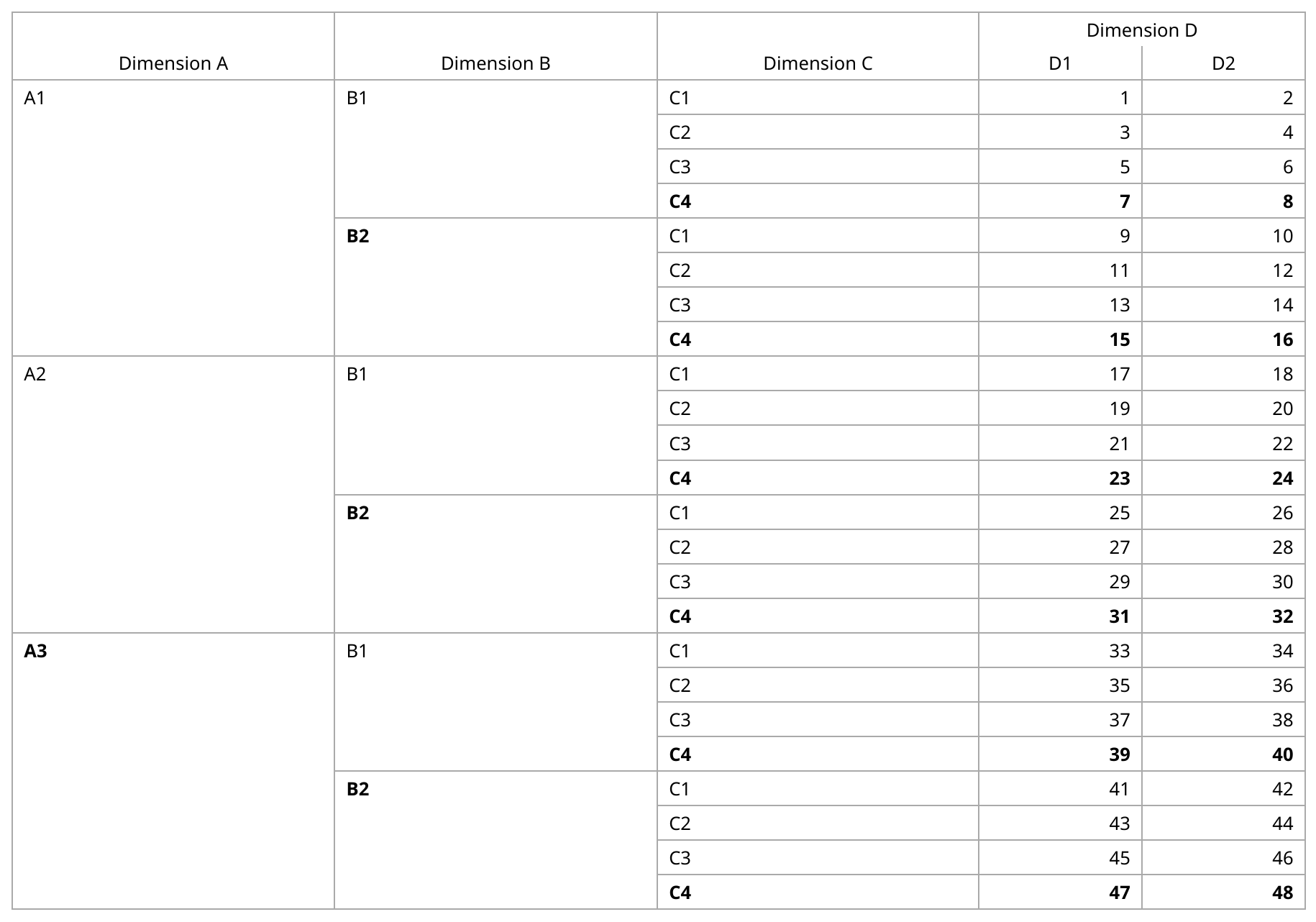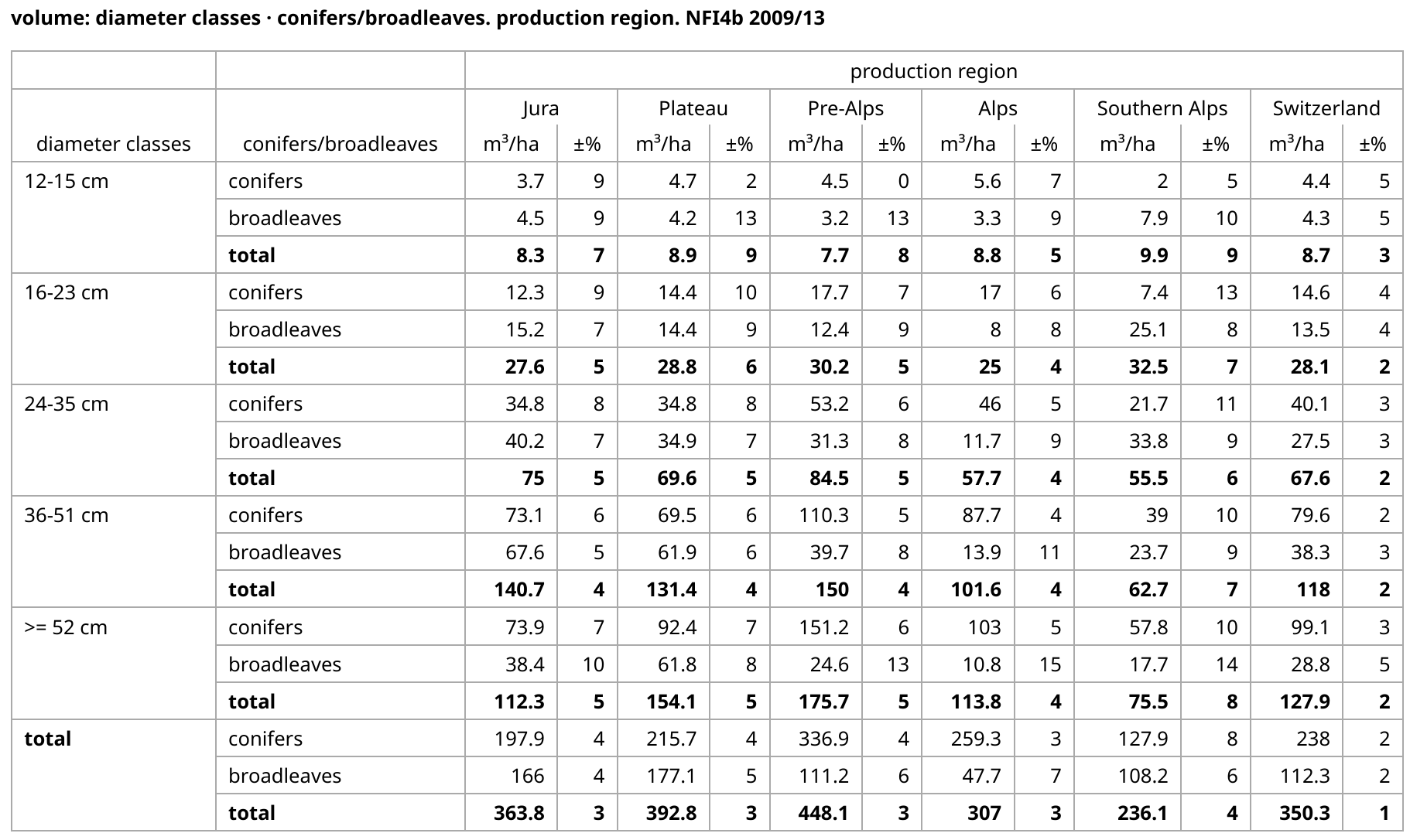lfiweb / jsonstat-phpviz
Render JSON-stat data as multidimensional html tables
Installs: 275
Dependents: 0
Suggesters: 0
Security: 0
Stars: 2
Watchers: 3
Forks: 0
Open Issues: 2
pkg:composer/lfiweb/jsonstat-phpviz
Requires
- ext-dom: *
- ext-json: *
Requires (Dev)
- phpoffice/phpspreadsheet: 2.*
- phpunit/phpunit: 10.*
Suggests
- phpoffice/phpspreadsheet: 2.*; Install if you want to render/export JSON-stat as an Excel file
README
Render JSON-stat v2.0 data with any number of dimensions as an HTML table using PHP.
Features
- render any number of dimensions of any size as an HTML table (e.g., theoretically limited only by memory).
- use any number of dimensions to group rows and columns.
- transpose dimensions along two or more axes
- structures the table with
<thead>and<tbody>elements - creates a table
<caption>automatically from the JSON-stat. - renders column and row headers using the attributes
scope,colspanandrowspanto provide screen reader support for visually impaired users - sets CSS classes (
firstandlast) to identify the start and end of row groups (e.g., row totals) - exclude dimensions of size one (when ordered continuously from index 0) from rendering when wanted
- export (render) the table as tab separated values (tsv) or any character (csv) of your choosing.
- download (render) the table in the LibreOffice Calc (ods) or the MS Excel format (xlsx).
not implemented
childproperty e.g., hierarchical relationships between different categories
Usage
Example 1
Render a table from JSON-stat data having four dimensions with sizes [3,2,4,2] (= shape).
Two dimensions are automatically used to group the rows:
<?php use jsonstatPhpViz\Reader; use jsonstatPhpViz\Renderer\TableHtml; require_once __DIR__.'/../vendor/autoload.php'; $filename = 'integer.json'; $json = file_get_contents($filename); $jsonstat = json_decode($json); $reader = new Reader($jsonstat); $table = new TableHtml($reader); $html = $table->render();
Example 2
Render a table from the same JSON-stat data, but with three dimensions used for the row grouping instead:
$reader = new Reader($jsonstat); $table = new TableHtml($reader, 3); $html = $table->render();
Example 3
Transpose the table by permutating dimension A with dimension D:
$reader = new Reader($jsonstat); $axes = [3, 1, 2, 0]; $reader->transpose($axes); $table = new TableHtml($reader); $html = $table->render();
See NumPy transpose for how to use the axis array.

Example 4
Real-world example with data from the Swiss NFI having a caption, column units and row totals as well as two dimensions of size one, excluded from rendering:
$reader = new Reader($jsonstat); $table = new TableHtml($reader); $table->excludeOneDim = true; $table->noLabelLastDim = true; $html = $table->render();
Example 5
Render the table as comma separated values (csv):
$reader = new Reader($jsonstat); $table = new \jsonstatPhpViz\Renderer\TableTsv($reader); $table->separatorCol = ","; $html = $table->render();
Installation
Install with composer require lfiweb/jsonstat-phpviz or add it to your composer.json
Dependencies
None. But if you want to export the table in the ODF Spreadsheet (ods) or MS Excel format (xlsx), you need PhpSpreadsheet. You can install it with composer require phpoffice/phpspreadsheet.
JSON-stat rendering rules
The renderer applies the following rules when generating a html table:
- the sizes of the dimensions are read from the
sizeproperty from left to right and also rendered in that order - dimensions 1, ..., n-2 are used to group rows (can be set manually to any number <= n)
- the second to last dimension n-1 is used as the first, outer column
- the last dimension is used as the innermost column
- the
labelproperty is used for the caption (can be set manually to null or any string)
HTML inside JSON-stat
Caution: Do this only if you trust the origin of the JSON-stat.
The renderer (or rather the DOMDocument) escapes all html contained in the JSON-stat when inserting it into the DOM.
If you want to allow HTML inside the table cells, you need to override the classes TableHtml and CellHtml as follows:
class MyRendererTable extends TableHtml { /** * Override with the new html cell renderer. * @return void */ protected function newCellRenderer(): CellInterface { $formatter = new FormatterCell($this->reader); return new MyCellHtml($formatter, $this->reader, $this); } } class MyCellHtml extends CellHtml { // render html inside label (header) cells public function addCellHeader(DOMElement $row, ?string $str = null, ?string $scope = null, ?string $colspan = null, ?string $rowspan = null): DOMElement { $cell = parent::headerCell($row, $str, $scope, $colspan, $rowspan); $cell->textContent = ''; UtilHtml::append($cell, $str); return $cell; } }
Note:
Note 1: When rendering a table with rowspans (useRowSpans property is true), applying css might become complicated because of the irregular number of cells per row.
Note 2: Originally, this code was directly translated from its JavaScript counterpart jsonstat-viz, but has since been developed independently @see https://github.com/speich/jsonstat-viz
Author
Simon Speich for the Swiss National Forest Inventory
License
GNU General Public License v3.0 or later
See COPYING for the full text.



